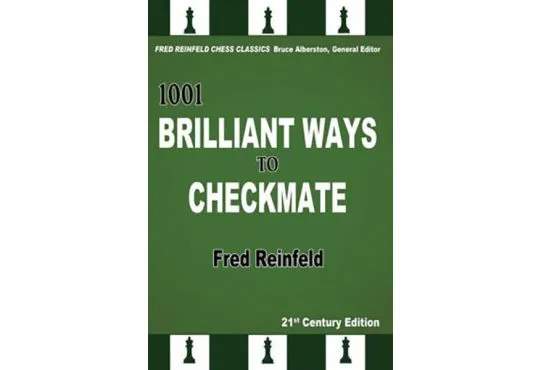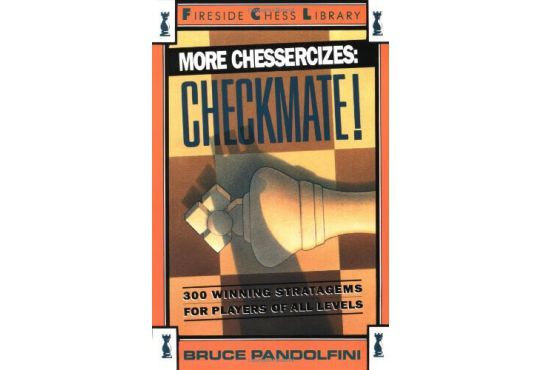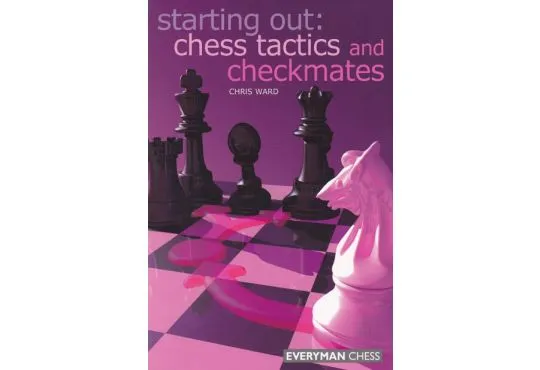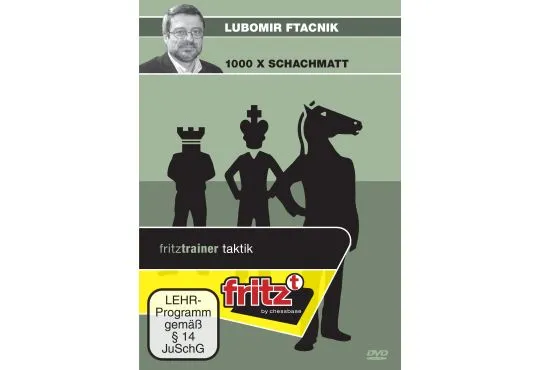How to Get a Checkmate in Chess: A Beginner’s Guide
There’s only one way to win a game of chess, and it’s called checkmate. Checkmate means there is no legal move to escape the threat against the King. A threat to a King is called a check, and there are three types of possible escapes to any check.
They’re more commonly known as CPR or Capture, Protect, and Run Away.
- Capture, naturally, means simply to eliminate the checking piece.
- Protect means to interpose (or block) the check; note this is only effective against checks from line pieces, not from a Knight or Pawn.
- Run Away means moving the King from the attacked square to a safe one.
When a player’s King is checked and has no escape of any kind, they are checkmated, and the game is immediately decided in their opponent’s favor. Sounds easy enough, right? Let’s explore How To Get A Checkmate In Chess.
How We’ll Study Checkmates
Each piece in your chess army has different abilities and strengths. This means that the typical checkmates each piece can deliver will usually follow the same checkmating constructions or patterns.
A diligent study of the checkmating patterns will allow the student to build up their pattern recognition. This results in an increased chance of finding a checkmate when possible and steering the position toward creating a checkmate. Finally, I’ll note that the threat of checkmate is superlative. Even if we don’t land the final blow, the opponent often suffers heavy material losses to avoid our threats. Especially when we combine them with other tactics, let’s start with the gentle giants, the rooks.
How to Get a Checkmate in Chess with Rooks
The rook, one of the major pieces, is a powerful member of your army. Though it usually has to wait patiently before joining the action, it can often do so with great effect. One of the first checkmates I teach my students, the ladder checkmate, uses two rooks against a lone King. Note: Assume diagram fragments show the corner

Of course, being an elementary mate (given an overwhelming material advantage over a lone king), it has quite a limited practical use as we begin moving past the novice level. However, it gives us a perfect picture of how a rook may deliver the final blow.
Generally, the mated king will find itself on the board's edge - a common theme since fewer squares are available to flee. In this case, the check comes along the back rank, and the escape squares are covered by another rook, but just with these two little parameters, we can make minor tweaks to learn new patterns:
Below are four instances of back line checkmates.

We can cover the escape squares differently or rotate the scene 90 degrees, but the idea remains. The back-rank checkmate is the most basic (and frequent!) version of this checkmating pattern.

This checkmate is a frequent protagonist, in some form or another, at all levels. This is pretty logical since it’s good practice to castle early in the game. However, as the game progresses, we often see that the pawns initially protecting the king may soon obstruct his escape instead.
This is a good moment to highlight a key feature of this - and indeed many checkmating constructions. We don’t always need to control every square around the enemy king - he can’t move where his own pieces impede him.This may sound like an obvious thing to note. But look out in the remaining patterns - you’ll see how often we count on enemy pieces obstructing their own king.
Checkmating with the Queen
The queen is the most powerful piece, combining the powers of the rook and bishop into one. Successful king hunts often feature the queen either as support or as the star of the show. Aside from the king, she’s the only one that can move in all 8 directions.
This means the queen is particularly effective when checking from an adjacent square. When protected, otherwise, the king can defend himself with a capture. When checking this way, the queen controls many of the king’s potential escape squares.
If the king finds himself on the edge - and frequently this is the case, i.e., the back rank. A queen check from an adjacent square with protection is often checkmate.We may call this a ‘queen and helper mate;’ any piece can function as the helper. I often rhyme to help students remember: Queen in King’s face - there’s no space.
To illustrate how to get a checkmate in chess using the queen, take an empty board and place a king on any square on the perimeter (edge). Then, take the opposing queen and place it “In his face.” Here’s an example:

If we imagine some friendly piece lending protection to the queen, and if you’ve placed her properly “In his face,” then it’s checkmate. From our example, the queen’s helper could be a pawn on c3, a knight on d3, a rook on b7, or a bishop on f6, to name a few. Look at how many mating constructions become possible with just one pattern!
Let’s take it up a notch. If we repeat this “Queen in his face” exercise, but with the targeted king in the center, you’ll notice only two squares aren’t covered by the queen:

Notice those two squares are the queen’s ‘blindspot’ - a knight’s move away, no matter how we rotate the queen around the king’s position. Therefore, all we need to open up a whole new world of queen checkmates is:
- Protection for the queen
- Coverage of the blindspot squares.
The latter could come, for example, from a white knight on a4 in the left diagram or on g7 in the right diagram. Let’s also not forget how our other pieces could control such squares or how the king’s own pieces can obstruct his escape. I'll let the reader explore how many other mates can come this way - try on your board at home!
How to Get a Checkmate in Chess Using A Bishop
Bishops are rightly regarded as powerful attacking pieces, especially when in tandem. There are checkmating patterns involving a lone bishop and the bishop pair. However, these will naturally require a bit more help with escape square coverage than the queen. They don’t require the proximity we saw in the previous section’s patterns. Remember, a king’s escape can also be covered by his own pieces.
Bishop checkmates are less common, so we’ll focus on one specific pattern. This one, called Boden’s mate, is a sacrificial combination rather than a geometric construction:

In the diagram above, White’s dark squared bishop cuts through the position. He is depriving the black king of the b8 and c7 squares. Further, his pieces deprive the black king of d8 and d7.
Any time the king has a few squares available, look for mating ideas.
The c4-bishop can join the attack: 1. Qxc6+! bxc6 (forced) 2. Ba6#

This checkmating combination is successful not just because of one bishop but because of both bishops and the queen. Geometric constructions (as in our diagram fragments or our analysis of the queen and helper mate) are the building blocks for checkmate. Still, in practice, it often takes a team effort - multiple pieces working together.
Rook and Bishop
Just as a “Queen in the King’s Face” is effective due to the queen’s combination of a rook and bishop’s powers, the two pieces themselves can coordinate well.

The Diagram below shows the most common of the above constructions, and it takes center stage in the world-famous Opera House Game:

16.Qb8+! Nxb8 (forced) 17. Rd8# was the conclusion of the game.

Paul Morphy vs Duke Karl / Count Isouard, Paris 1858.
Rook and Knight
The rook and knight mate, known as the Arabian Mate,is one of the oldest recorded in chess literature. These are the only two pieces that still move today as they first did when chess was invented over fourteen hundred years ago. (MacEnulty)

Above are two of the most common Rook and Knight checkmating patterns. The left-hand diagram shows the Arabian Mate; note the checkmating construction also works with the rook on b1 instead of a2.
To conclude and highlight the importance of how to get a checkmate in chess by learning our checkmating patterns, let’s see how the current world champion, GM Ding Liren, defeated GM Ian Nepomniachtchi with precisely one of these patterns in the match that earned him the title!

In this position after 40…Rf8, White is better. His a7-Rook is active on the seventh rank and restrains the passed a-pawn. The g3-Queen outshines the c1-Queen, attacking via the g-file. The e7-Knight is more effective than the b1-Bishop, counting on proximity and safe squares to jump to. While the b1-Bishop influences no diagonal relevant to the white king.
All these factors, plus a weakened h8-King, mean that White counts on better attacking chances. Ding Liren played 41. d5!

There followed 41…a2 42. Qc7! Threatening “Queen and Helper Mate” after Ng6+ and Qxg7# (In the King’s Face) 42…Kh7, so the eventualNg6 isn’t with check 43. Ng6 Rg8 guarding g7; 43…Bxg6 44. Qxg7# 44.Qf7!
Black resigned in the game Ding Liren - Ian Nepomniachtchi FIDE World Championship Match 2023 (6). Can you see why?

Let’s understand White’s intention by giving him a second move:
1. Qf7xRg8+! Kxg8 (forced) 2. Ra8+ Kf7 (2…Kh7 3. Rh8#)
3. Rf8#! e6 was preemptively covered by the mysterious 41. d5! Black, even on the move, can’t stave off checkmate: 44…Bxg6 45. hxg6+ Kh8 46. Qxg8+! Kxg8 47. Ra8#
(the g6-pawn creates the back-rank mate pattern)
-
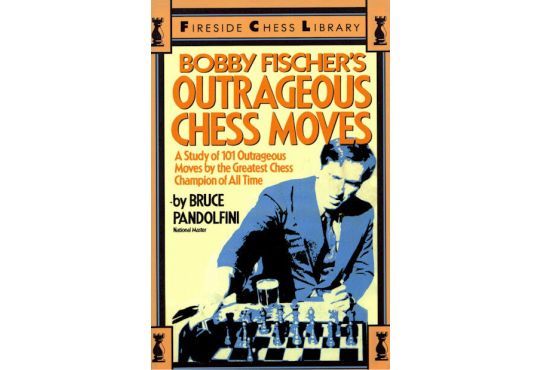 Bobby Fischer's Outrageous Chess Moves A Study of 101 Outrageous Moves by the Great Chess Champion of All Time$11.95
Bobby Fischer's Outrageous Chess Moves A Study of 101 Outrageous Moves by the Great Chess Champion of All Time$11.95
How to Get a Checkmate in Chess: Putting it Together
We don’t need to be World-Champion level players to use checkmating constructions. All it takes is knowing a few patterns and aiming for them. As demonstrated by Ding Liren above, positions with the king in peril often result in multiple checkmating ideas, which usually transfer from one to another.

For example, let’s take a look at the following diagram, where Black is trying to defend themselves from the Queen and Helper checkmating idea:
1. Qg5 Kh8 2. Qh6 Rg8 it looks like Black is safe, having covered g7 and therefore the Qg7# idea. However, in doing so, a different pattern arises.
Can you spot it?
Yes! We have a modified back-rank checkmate! 3. Qxh7+! Kxh7 4. Rh4#
Final Thoughts
Check attacks the king, but only Checkmate ends the game. The difference between the two is whether or not there’s an escape using CPR. To make finding a checkmate in your game easier, there are many checkmating patterns to study, whether they be geometric configurations or tactical combinations.
Remember that in many of these, the king’s escape squares may be blocked by his own pieces. When the king has limited squares, take note!




